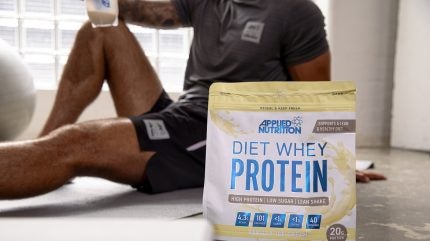
The deal announced this week which saw France-based sports nutrition business Nutripure attract majority investment from local private-equity firm PAI Partners is further evidence of the enduring appeal of this category.
Once dismissed as a pseudo-medicine offering that supermarkets would cram into any space they could find – sometimes next to the headache tablets, sometimes round by the fizzy drinks, sometimes in the confectionery aisle – these days sports nutrition is understood as not just a category in its right but one worth showcasing.
And, imitation being the sincerest form of flattery, those same supermarket groups are now busy creating own-brand sports nutrition lines as they build product sets to tap into a consumer desire to buy bars, drinks or supplements offering a protein or carbohydrate boost.
Explaining its investment in the category, PAI Partners’ Stefano Drago said: “Nutripure has demonstrated exceptional growth and innovation in the sports nutrition and wellness space and is well placed to benefit from structural trends revolving around a healthier lifestyle.”
The message seems to have hit home, with investors and trade buyers, that there is nothing faddish about sports nutrition. It is a lifestyle choice linked to gym memberships and other fitness activities first and foremost, but these products – bars, energy drinks, protein powders – are often as not consumed by people who do no exercise but see them as a healthier alternative to their normal choices.
Protein is at the heart of the category’s growth. Sports nutrition is its spiritual home but it is now added to everything from chocolate bars and bread to yogurts and liquid milk.
Asked in a Just Food interview this week whether he thought added protein was a fad, Robert Graham, managing director of Scotland-based Graham’s The Family Dairy said: “No. Protein is here for good. Kids are into it and they go to the gym so that generation will stay with it.”
Part of the appeal to investors is the category’s multi-channel distribution potential. Growing up through US bodybuilding, specialist magazine adverts, gyms and direct-to-consumer channels, it fits easily into the e-commerce age while also holding its own in the retail arena.
Mainstream food businesses, including confectioners, have seen the potential of this category and a number of deals have ensued. Packaged food companies with more indulgent products have looked to make their portfolios healthier, fearing a double whammy of new legislation clamping down on fatty foods and sugar-laden products and the post-Covid health-conscious consumer trend being turbo-charged by increased use of GLP-1 weight-loss drugs.
UK sports nutrition firm Applied Nutrition – linked to £1bn ($1.27bn) flotation plans in some media reports recently – points to a category worth $21bn globally in 2022 and which is expected to grow to $52.5bn by 2032.
The growth of many of these businesses from humble origins – a shop in the case of Applied Nutrition – to multi-million dollar businesses nicely apes the origin stories of the large supermarket groups, but in a much shorter time frame.
Given what has been achieved in this category in the last decade, it is hard to see any downside risk to its future growth prospects.



